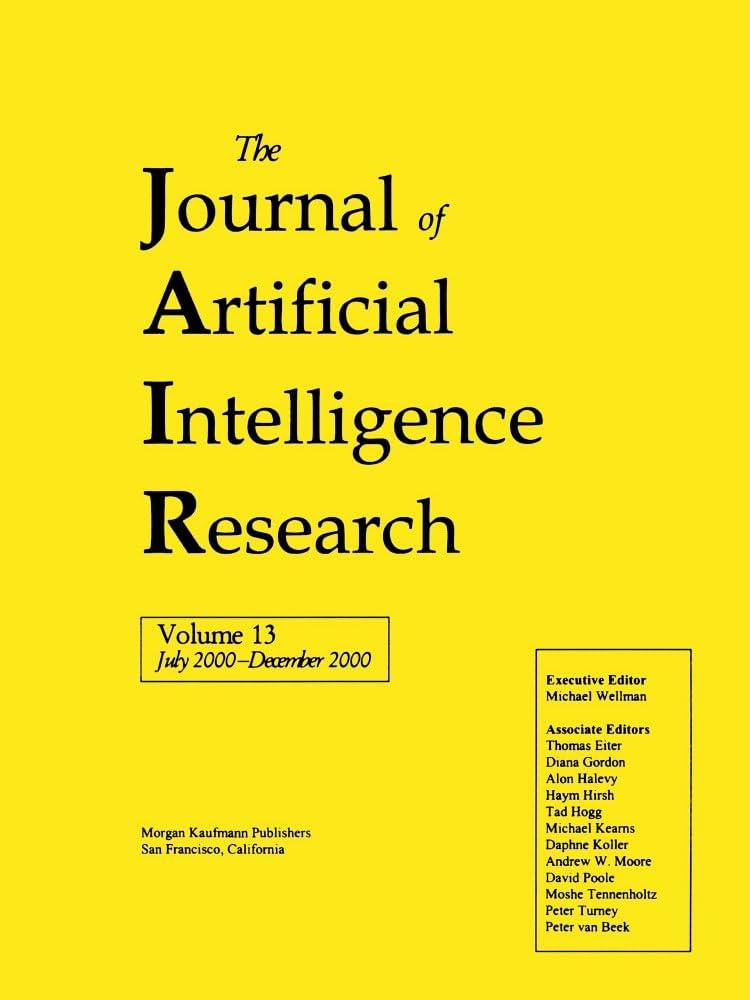具有自适应作用深度的⊥基的挖掘
IF 4.5
3区 计算机科学
Q2 COMPUTER SCIENCE, ARTIFICIAL INTELLIGENCE
引用次数: 0
摘要
在形式概念分析中,有限结构的基础是表征该结构的所有有效含义的一组含义。这个概念可以适应描述逻辑的上下文,其中基础由一组概念包含而不是暗示组成。在此设置中,概念表达式可以任意大。因此,目前尚不清楚是否存在有限基,如果存在,概念表达式可能需要多大。我们首先回顾文献中从有限解释中挖掘出的⊥基的结果。这些主要侧重于寻找一个有限的基础或固定角色深度,但可能会失去一些具有较高角色深度的有效概念包含。然后,我们提出了一种挖掘本文章由计算机程序翻译,如有差异,请以英文原文为准。
Mining ℰℒ⊥ Bases with Adaptable Role Depth
In Formal Concept Analysis, a base for a finite structure is a set of implications that characterizes all valid implications of the structure. This notion can be adapted to the context of Description Logic, where the base consists of a set of concept inclusions instead of implications. In this setting, concept expressions can be arbitrarily large. Thus, it is not clear whether a finite base exists and, if so, how large concept expressions may need to be. We first revisit results in the literature for mining ℰℒ⊥ bases from finite interpretations. Those mainly focus on finding a finite base or on fixing the role depth but potentially losing some of the valid concept inclusions with higher role depth. We then present a new strategy for mining ℰℒ⊥ bases which is adaptable in the sense that it can bound the role depth of concepts depending on the local structure of the interpretation. Our strategy guarantees to capture all ℰℒ⊥ concept inclusions holding in the interpretation, not only the ones up to a fixed role depth. We also consider the case of confident ℰℒ⊥ bases, which requires that some proportion of the domain of the interpretation satisfies the base, instead of the whole domain. This case is useful to cope with noisy data.
求助全文
通过发布文献求助,成功后即可免费获取论文全文。
去求助
来源期刊

Journal of Artificial Intelligence Research
工程技术-计算机:人工智能
CiteScore
9.60
自引率
4.00%
发文量
98
审稿时长
4 months
期刊介绍:
JAIR(ISSN 1076 - 9757) covers all areas of artificial intelligence (AI), publishing refereed research articles, survey articles, and technical notes. Established in 1993 as one of the first electronic scientific journals, JAIR is indexed by INSPEC, Science Citation Index, and MathSciNet. JAIR reviews papers within approximately three months of submission and publishes accepted articles on the internet immediately upon receiving the final versions. JAIR articles are published for free distribution on the internet by the AI Access Foundation, and for purchase in bound volumes by AAAI Press.
 求助内容:
求助内容: 应助结果提醒方式:
应助结果提醒方式:


